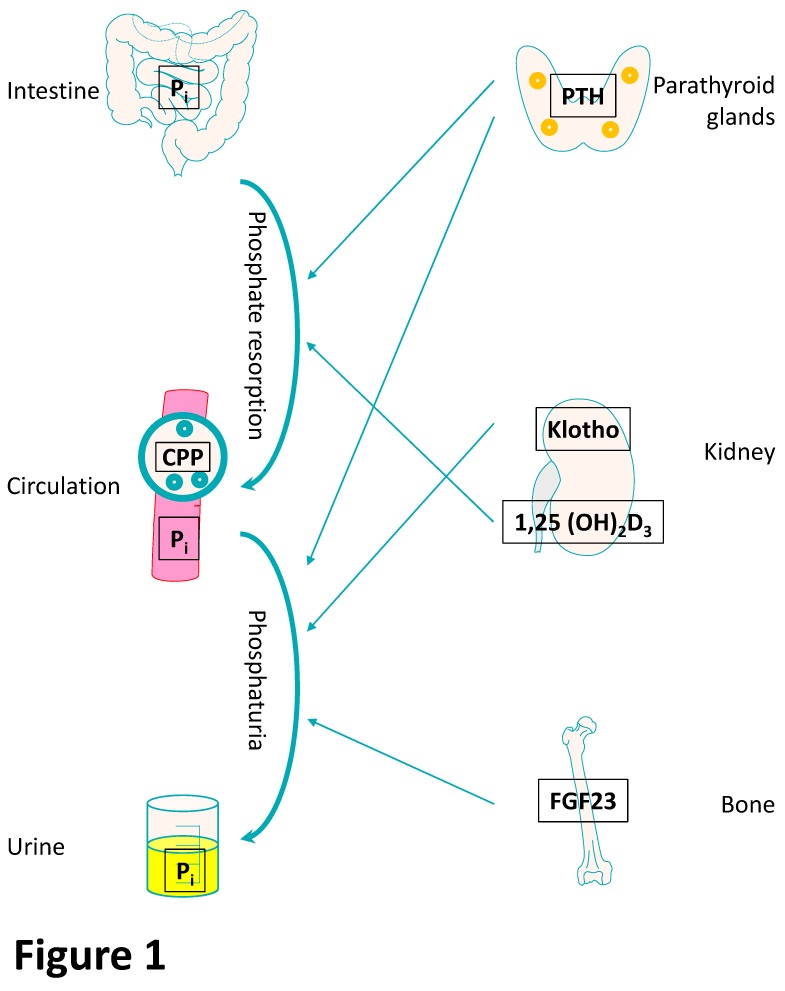Figure 1.
The phosphate-fibroblast growth factor-23 (FGF-23)–klotho endocrine axis. Main effectors of phosphate homeostasis with potential effects on ageing components (simplified overview). Phosphate (Pi) is taken up by the intestine and accumulates in the circulation of patients with advanced chronic kidney disease (CKD). In the circulation, fetuin A (blue circles)-bound calcium Pi in calciprotein particles (CPP) prevents precipitation of calcium Pi in the circulation. Increased Pi is further regulated by parathyroid hormone (PTH) secreted from the four parathyroid glands (orange circles) at the back of thyroid gland by increasing intestinal Pi resorption but also inducing phosphaturia. The 1,25(OH)2 vitamin D3 metabolite is activated in the kidneys and increases intestinal Pi resorption. Furthermore, bone-secreted fibroblast growth factor-23 (FGF-23) also exerts phosphaturic effects through its mandatory co-receptor klotho in the kidneys.

